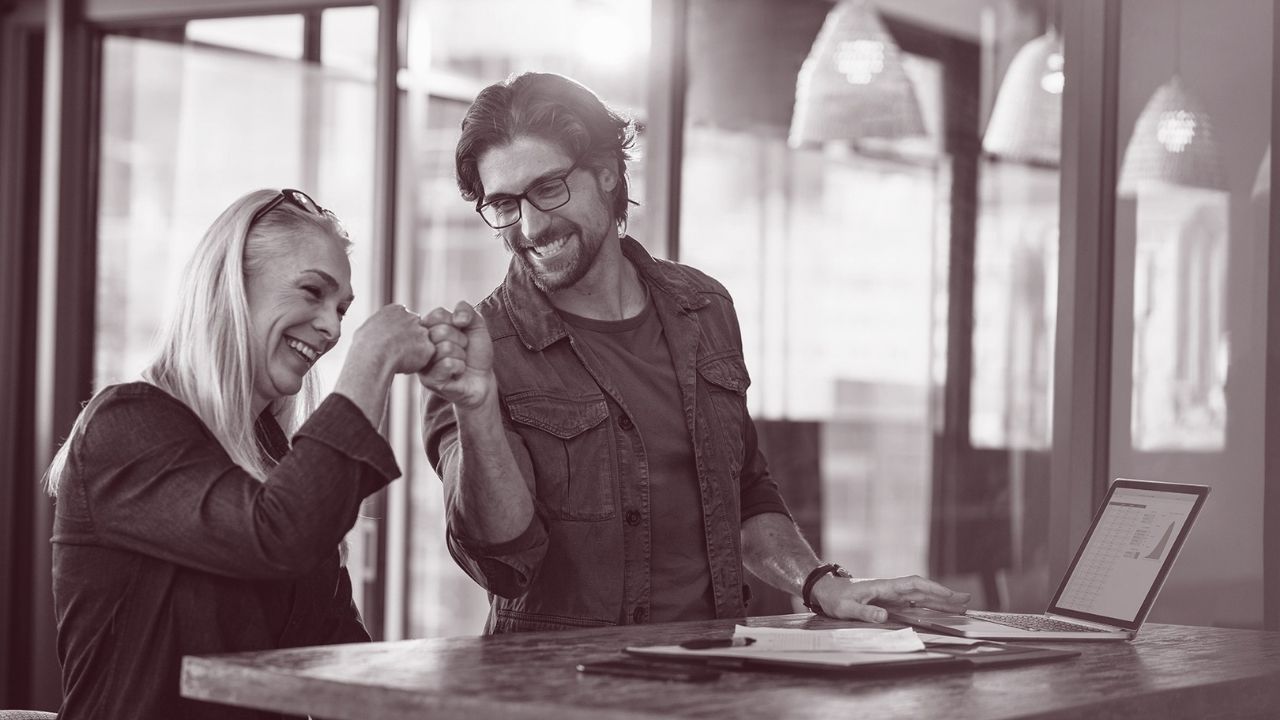- Flexible office space caters to people of all ages – so how do you create a space that’s suitable for multiple generations and a vast spectrum of requirements?
- A big piece of the puzzle lies in technology. Workspace has changed to reflect the growing need for mobile devices and work-anywhere connectivity.
- Everyone has different expectations for what a workplace should be like, and their needs vary. Will Kinnear, founder of HEWN, explains how to get the right balance.
By Will Kinnear, founder of HEWN.
Office space used to be so much simpler. The look was fairly uniform: Carpet, white walls, desks and some sort of partitioning, if any. Job done.
But it’s far more complicated now. Work practices have evolved with the help of technology, which has changed expectations. The problem for workspaces is age.
There is a proportion of the workforce who entered the world of work at a time without computers, mobile phones or any of the digital technology we now take for granted. The office was somewhere you had to go to work, there was no other choice. It was one desk per person and a culture that dictated if you weren’t sat at it, you weren’t working.
But then you didn’t have any mobile devices, which meant it was harder for work to follow you home once you’d left the office.
At the other end of the spectrum are the generation who’ve grown up with technology and don’t know anything different. They are used to communicating on the hoof and have never been tied to working at a desk. The boundary between work and life is less rigid.
And somewhere in the middle are those who didn’t grow up with technology but have adopted it, at least to a degree.
Each group has different expectations for what a workplace should be like, and their needs vary. I once witnessed a business partner retreat back to a ‘traditional’ office set-up after just two hours in a co-working space because it was so alien to how they usually worked.
So how do you create offices that can suit young talent but also the generation more used to traditional styles of working?
If you can, create a variety of spaces to appeal to different ages and needs – open plan desks, fixed desks, privacy booths, and offices which are closed off too.
If you’re looking to appeal to a certain demographic, that’s fine but keep the messaging consistent so there are no surprises.
This may sound simple, but take people of different ages and stages around the space and listen to what they think – this is the best market research you can do. It’s business not personal, so listen to the feedback.
While the technology which has changed how we work has been around for quite a while, the office sector has been slow to adapt.
Watercooler chats were the early precursor to breakout areas and a more social way of working. But it was tech companies like Google which were the pioneers of creating more inclusive, user-friendly, and flexible workspaces, perhaps in large part due to the fact they were recruiting a young, tech-savvy workforce.
In the world of serviced offices, it wasn’t until the arrival of the likes of WeWork that the revolution within flexible space began. Before that, serviced offices were very similar to traditional offices, just let on flexible terms.
The question is whether those now creating workspaces fully understand how they are used. Getting it wrong can impact employee retention or recruitment regardless of age.
And for the building owner, not creating the spaces that people want to work in means a building is less in demand.
Unless a business is only interested in recruiting 25-year-olds, the office space has to appeal to the majority. It has to be generic enough but not too generic – it’s a difficult balancing act.
Going in with eyes open is key. It can’t be a tick box exercise with features shoe-horned into a building wherever there is space. And neither can space be a compilation of copycat features seen elsewhere. Workspace has to be carefully curated with an understanding of what is trying to be achieved and what employees want.
For example, is a breakout area in the basement with no natural light going to be appealing? Does the entrance and ground floor create the right impression?
I’ve had prospective tenants take one look at a reception area and turn on their heels without seeing the rest of the building.
How space is dissected is critical. People want communal spaces but also privacy and quiet.
After technology, the pandemic is having the biggest influence on how people work – and want to work. For example, there is a huge demand for ‘phone booths’ or private spaces for video calls within offices.
Successful offices are now about supporting how people want to work and enabling productivity rather than dictating how and where to work. And if you aren’t thinking about this now, it will only become more critical with the generational shift.
Written for Allwork.Space by Will Kinnear, founder and director at HEWN, a specialist flexible workspace agency based in the UK.


 Dr. Gleb Tsipursky – The Office Whisperer
Dr. Gleb Tsipursky – The Office Whisperer Nirit Cohen – WorkFutures
Nirit Cohen – WorkFutures Angela Howard – Culture Expert
Angela Howard – Culture Expert Drew Jones – Design & Innovation
Drew Jones – Design & Innovation Jonathan Price – CRE & Flex Expert
Jonathan Price – CRE & Flex Expert












